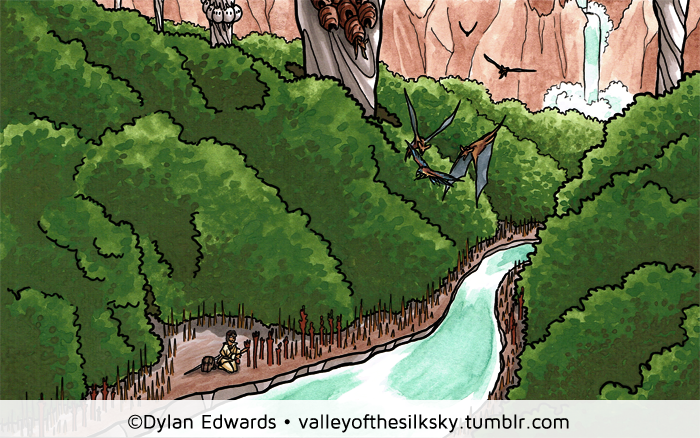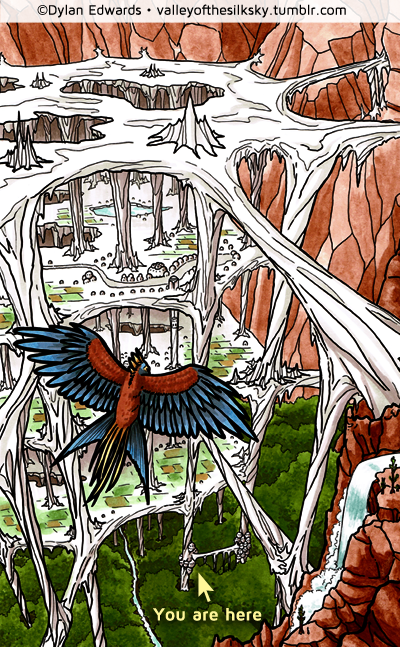 The web structure that spans almost the entire length and breadth of the valley is a country known as Pocalo.
The web structure that spans almost the entire length and breadth of the valley is a country known as Pocalo.
Each level of the web structure is a separate province, and each province has its own distinct flora and fauna, culture, dialect, food, and so forth. There are elevators connecting the provinces that allow for travel up and down.
Muru is the third tier of the lower provinces, making it the topmost province that is still in direct contact with the ground. Muru is a bit of a rough place to make a go of things, as there are a number of predators roaming about who view humans as a tasty snack. The porous nature of Muru’s borders means that people can come and go as they please, making it a desirable location for those who wish to operate outside the law.
Most settlements in Muru are built high off the ground due to the aforementioned predators and bandits. Because much of the interior is in the shadow cast by the upper provinces, almost all major settlements in Muru are found around the outer edges. The city the arrow is pointing to is Duvane, an outpost town that is not at all flashy, but a good spot to head to if you have goods to sell or trade.
Despite being rough and difficult to navigate, Muru forms a cornerstone of the Pocali economy. It is home to many rare flora and fauna which are used to make medicines. The majority of runners spend at least some of their time foraging in Muru.

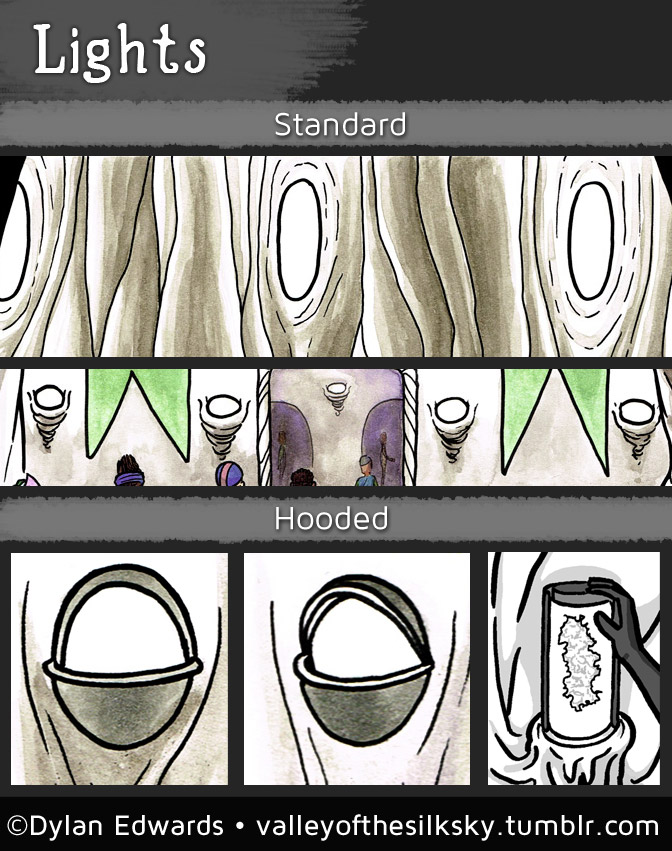 Pocalo doesn’t have electric lighting (or electric anything, for that matter).
Pocalo doesn’t have electric lighting (or electric anything, for that matter).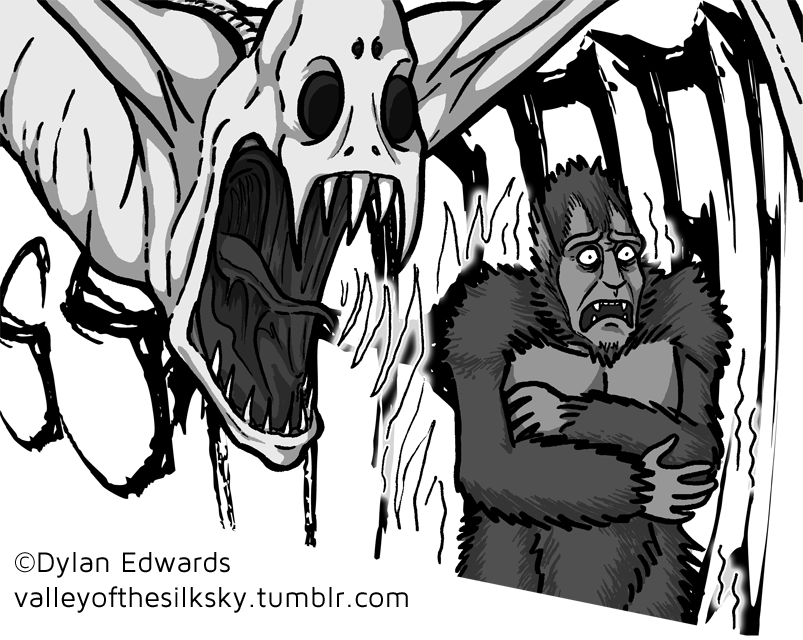 Shriekers are one of the largest predators in the Valley. They are typically found where forests meet open space, and typically prey on herd animals of various sorts.
Shriekers are one of the largest predators in the Valley. They are typically found where forests meet open space, and typically prey on herd animals of various sorts.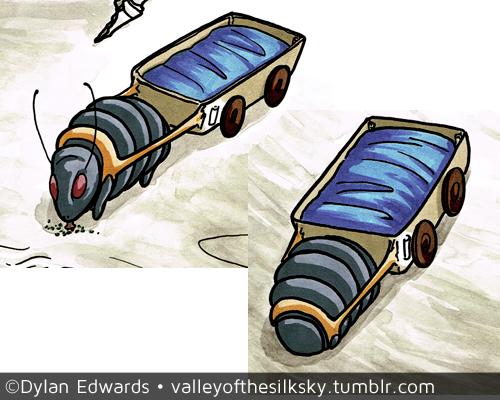 The names humans have for many of the flora and fauna of the Valley come from Rovari, the Daraz language (Daraz are native to the Valley, humans are not). This particular creature is called merev gombi in Rovari, which literally means “hard sphere.” Humans usually just call this animal “merev.”
The names humans have for many of the flora and fauna of the Valley come from Rovari, the Daraz language (Daraz are native to the Valley, humans are not). This particular creature is called merev gombi in Rovari, which literally means “hard sphere.” Humans usually just call this animal “merev.” 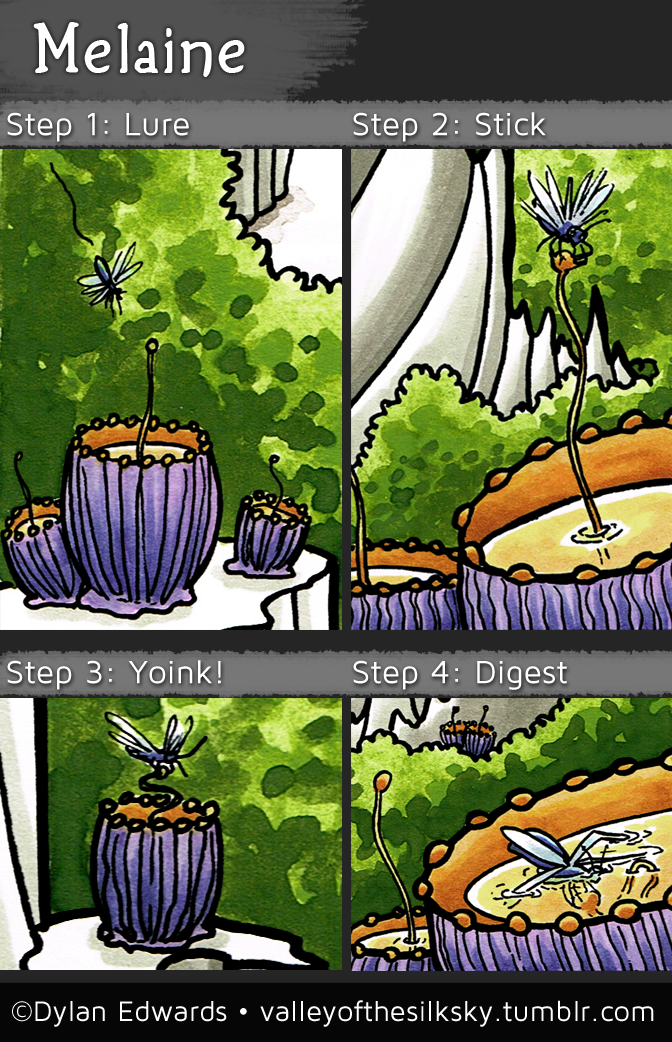
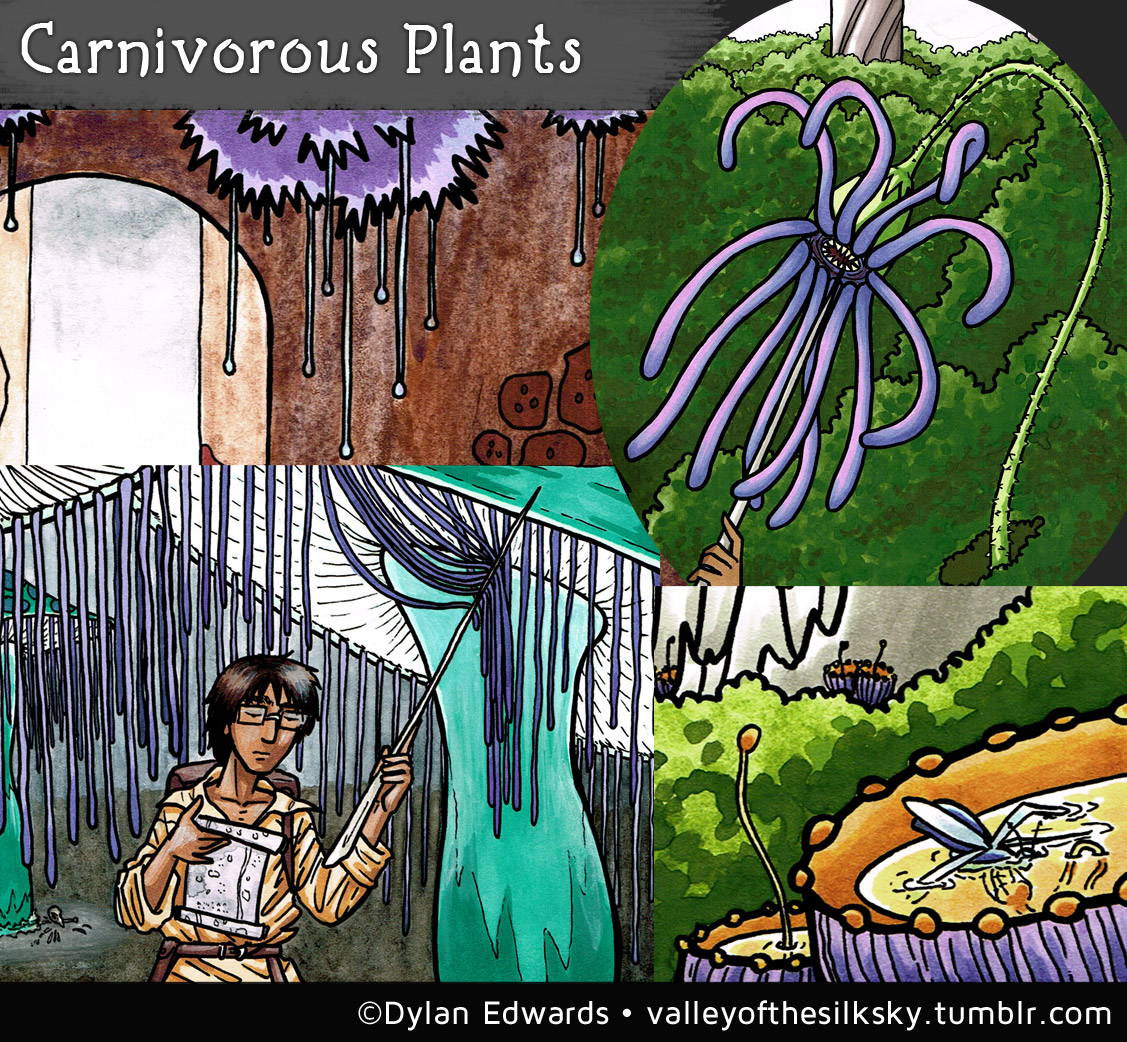
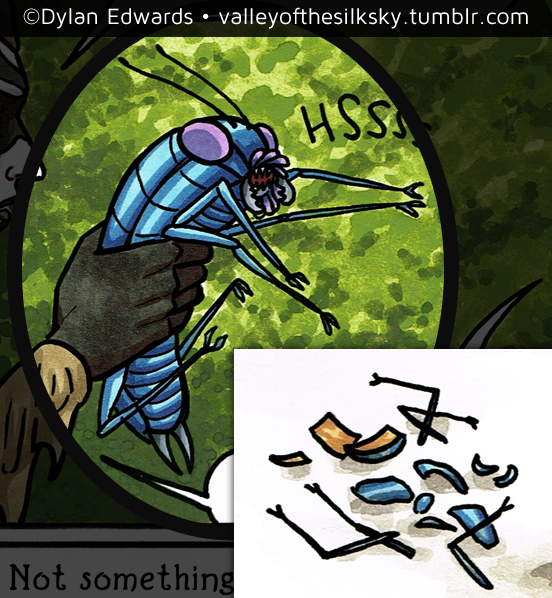 Ah, the humble blue beetle, such a common sight in the Valley it gets the most obvious possible name. It’s also one of the main sources of animal protein for the citizens of Pocalo. So delicious, so nutritious.
Ah, the humble blue beetle, such a common sight in the Valley it gets the most obvious possible name. It’s also one of the main sources of animal protein for the citizens of Pocalo. So delicious, so nutritious.